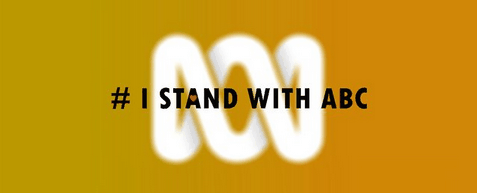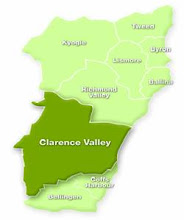Last year saw the completion of the Royal Commission into Institutional Responses to Child Sexual Abuse which revealed generational abuse within the Australian education and child welfare systems.
That year also revealed the ongoing failure of the Dept. of Human Services and Centrelink to fix its faulty national debt collection scheme, which possibly led to the deaths of up to eleven welfare recipients after they were issued debt advice letters.
The first quarter of 2018 brought a scathing United Nations report on Australia's contemporary human rights record titled Report of the Special Rapporteur on the situation of human rights defenders on his mission to Australia.
Along with a report into elder abuse in Oakden Older Persons Mental Health Service in South Australia and the release of a detailed Human Rights Watch investigation of 14 prisons in Western Australia and Queensland which revealed the neglect and physical/sexual abuse of prisoners with disabilities, particularly Aboriginal and Torres Strait Islanders.
The National Disability Insurance Scheme represents yet another crisis. The Productivity Commission has warned there is now no carer of last resort for patients in an emergency, care provider agencies are reportedly owed up to $300 million and disabled people are often receiving inadequate care via untrained staff or sometimes no care at all, as government disability care services are being closed in favour of the new privatised service delivery scheme.
None of these instances stand in isolation and apart from either Australian society generally or government policies more specifically.
They all represent the frequently meagre nature of community compassion and the real level of care governments have been willing to organise and fund for vulnerable citizens. In reality the ideal level of support and care for the vulnerable - that politicians spout assurances about from campaign hustings every three years - is just so much political hot air unless ordinary voters insist that it be otherwise.
As the Turnbull Coalition Government clearly intends to push forward with the full gamut of its punitive welfare reforms perhaps now it the time to consider if we have made any great strides towards a genuinely fair and egalitarian society in the last two hundred years or if we are only dressing up old cruelties in new clothes and calling this "looking after our fellow Australians”, "an exercise in practical love, "an exercise in compassion and in love".
Over
the last two decades, commissions and reports on institutional care across the
western world have highlighted widespread physical, sexual, emotional and
economic violence within caring systems, often targeted at society’s most
vulnerable people, not least children, the disabled and the elderly. These have
often come at significant cost not just to the individual, but the nation. As
Maxwell has shown, national apologies, that require the nation to render itself
shamed by such practices, and financial redress to victims, have impacted on
political reputation, trust in state organisations, and finances. As each
report is released and stories of suffering fill newspapers and are quantified
for official redress, both scholars and the public have asked ‘how was this
allowed to happen?’ At the same time, and particularly in the last few years as
many countries have turned towards conservative fiscal policies, newspapers
also highlight the wrongs of current systems.
In
the UK, numerous reports have uncovered abuses within welfare systems, as
people are sanctioned to meet targets, as welfare staff are encouraged to withhold information about services or grants to
reduce demand, and through systematic rejection of first-try benefit applications to
discourage service use. Often excused as ‘isolated incidents’ on investigation,
such accounts are nonetheless increasingly widespread. They are accompanied by
a measurable reduction in investment in welfare and health systems, that have
required a significant withdrawal in services, and have been accompanied with
policies of ‘making work pay’ that have required that benefits be
brought in line, not with need, but with low working incomes. The impact of
these policies and associated staff behaviour have been connected to
increasing child and adult poverty, declining life expectancy, growing homelessness, and the rise in foodbank use.
The
capacity of welfare systems to support individuals is shaped by cultural
beliefs and political ideologies around the relationship between work, human
nature, and welfare. Here late-eighteenth- and early-nineteenth-century Ireland
provides a productive example. Ireland in this period was marked by significant
levels of poverty amongst its lower orders, particularly those that worked in
agriculture. The capacity to manage that poverty on an individual level was
hindered by several economic downturns and harvest failure, that pushed people
to starvation. As a nation without a poor law (welfare) system until 1838, the
poor relied on charity, whether from individuals or institutions for relief. In
the late eighteenth and early nineteenth century, the ‘state’ (usually local
corporations) introduced more direct welfare, sometimes in the form of relief
payments but more usually access to workhouses.
After 1838 and until the crisis
of the 1847 famine, relief payments were removed and all welfare recipients had
to enter the workhouse. Accompanied by a growth in institutional charitable
services, the success and ‘care’ of the system could vary enormously between
areas and organisations. What it did not do is significantly reduce poverty
levels in the population.
Indeed,
it was important that the poverty levels of welfare recipients were not reduced
by the workhouse system. Like current ‘make work pay’ policies, poverty relief
measures were designed so that those in the workhouse or receiving charity
elsewhere did not have a significantly higher standard of living than those who
provided for themselves. This principle was determined based on the wage of an
independent labourer, one of the poorest but also largest categories of worker.
The problem for the system was that independent labourers earned so poorly that
they barely managed a subsistence diet. Their living conditions were extremely
poor; many slept on hay in darkened huts with little furnishings or personal
property.
Those
who managed the system believed that a generous welfare system would encourage
people to claim benefits and so could potentially bankrupt those paying into
the system. This encouraged an active policy of ‘cruelty’. Not only were
benefit recipients given meagre food and poor living conditions, but families
were routinely broken up, the sexes housed in different wings and prohibited from
seeing each other. Welfare recipients were often ‘badged’ or given uniforms to
mark their ‘shame’, and workhouse labour was designed to be particularly
physically challenging.
It
was a system underpinned by several interlocking beliefs about the Irish, the
value of work and the economy. Hard work was viewed as a moral characteristic,
something to be encouraged from childhood and promoted as ethical behaviour.
Certain groups, notably the Irish poor but also the British lower orders and
non-Europeans more generally, were viewed as lacking this moral characteristic
and required it to be instilled by their social betters. Welfare systems that
were not carefully designed to be ‘less eligible’ (i.e. a harsher experience
than ‘normal; life for the working poor), were understood to indulge an innate
laziness…..
Throughout
history, welfare services have required considerable economic investment.
Unsurprisingly, this has required those who run institutions of care for people
also to keep a careful eye on their financial bottom line. More broadly, it has
also required a monitoring of services to ensure value for money for the state
and its taxpayers and to protect the interests of the service users. As has
been seen recently in discussions of targets placed on staff providing welfare
provision in the UK, such measuring systems can come to shape the nature and
ethos of the service in damaging ways.
A
relevant historical example of this is from the Australian laundry system in
the late nineteenth and twentieth century. Young women were placed in youth
homes and registered as delinquent for a wide range of reasons from petty
criminal behaviour to perceived immorality (ranging from flirting with the
opposite sex to premarital pregnancy), to having been neglected by parents.
These homes, often run by religious organisations, were designed to ‘reform’
young (and occasionally older) women, preventing them from entering
prostitution or other criminal pursuits. The main mechanism for ‘reform’ was through
a moral discipline of work, which in many of these organisations revolved
around a professional laundry service. Work was often unpaid or paid at very
nominal sums, given to women on their release. The service, which catered to
the general public, kept institutions financially afloat, and many became
significant-sized businesses. They required women to work very long hours, in
challenging conditions. Accidents, particularly burns, were not unusual. As
businesses grew, other ‘reform’ efforts that ran alongside, such as education,
became rarer.
The
laundry became the driving focus of the institution. The women were cheap
labour, and managing that machine became not just a means to an end, but shaped
the logic and functioning of the care service. It is an example of how an
economic imperative can come to adversely impact on care, by disrupting the
purposes and functions of the service. It was also a process that significantly
reduced the level of ‘care’ that such institutions provided, not only through a
physical job that wore on the body but one reinforced with physical punishment,
which came to include emotional and sexual abuse, and poor food and living
conditions……
There
are significant variations between the institutional care described here for
the nineteenth century and a contemporary welfare state that encourages users,
as much as possible, to remain outside ‘the system’. The capacity for ‘the
state’ to control every dimension of a person’s life today is significantly
reduced; conversely, the ability of those in need to fall into service ‘gaps’
as they cannot access services or negotiate bureaucratic systems, is in some
ways increased. Nonetheless, there are parallels in the operation of both
systems that should give contemporary policymakers pause. Abusive care does not
just emerge from individual perpetrators, from the institutional model, or even
a lack of policies on staff-client relationships, but also from the wider
values and beliefs that shape the production of welfare systems; from the
financial and emotional investments that we place in institutions; and from the
corruption or occlusion of institutional targets and goals.
Ensuring
that the ‘cruel’ practices reported of current systems do not become systematic
issues on the scale of previous institutional abuses therefore requires not
just monitoring a few rogue individuals, but a clear goal about what our
welfare systems should achieve. The needs and interests of service users should
be placed at their heart, coupled with a significant social, cultural and
political investment in ensuring that goal is achieved. All other goals and
targets for welfare service providers, especially their frontline staff, should
be secondary to that and carefully designed so as not to interfere with that
end. With rising rates of poverty, homelessness and illness, welfare systems
look to continue to hold a central role in society for the foreseeable future.
It is imperative that the abusive practices of previous ‘caring’ regimes are
left firmly in the past.






